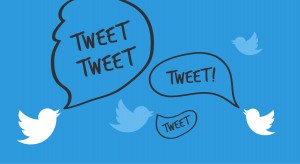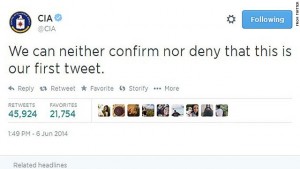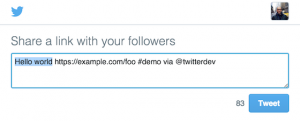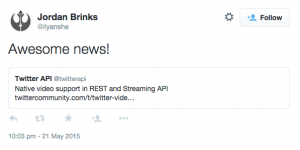What is Twitter?
You must have heard of Twitter, at least, even if you don’t use it. The company claim to have over 300 million active users per month across the world, so potentially that’s a lot of new customers for your SME. Information that you send instantly comes up on people’s feed so you have instant access to those customers who are online. Bear in mind however that 500 million Tweets are sent every day, which means that your Tweet can quickly become old news. You do need to keep feeding Twitter with info about your business, or special offers, if you wish to have an impact but there are great opportunities to be had, especially as around 80% of Twitter users, access it via a mobile device.
Will Twitter be useful for your SME?
You can use your Twitter account in several ways. Consider for example:
• Keep Tweeting and make people more aware of what you do or sell
• Connect with other people of influence (so suppliers, customers, politicians, celebrities etc.)
• Listen and learn – using Twitter for business enables you to find out what your customers are interested in as well as finding out what goes on in your industry.
• Utilise Twitter search to see relevant conversations, you can then jump in where you can add value.
• Provide customer service – allow people to offer feedback or contact you via Twitter and respond quickly and easily.
• Build a positive reputation.
Learn how to use Twitter
Is the language of Twitter all double Dutch to you? If you’re using Twitter for business, you need to learn the basics.
A Tweet is the basic unit of Twitter. It can only measure 140 characters or less (including punctuation and spaces) so is an art form in itself. You can include text, photos, links and videos however. Any link you include will be counted as a link and will take up to 22 characters.
When you want to reply to a Tweet you like, you press reply and a new box will open.
You can also ‘Retweet’ a Tweet, meaning you see one and then send it to all your followers too. You can Retweet it as it is, or use the Quote Tweet button to add your own message to the original Tweet.
Just as on Facebook, you can ‘Like’ a Tweet. This is a nice way to acknowledge what someone has said, and show your appreciation.
Use a Hashtag # on the beginning of a word, or a phrase without spaces as a way of finding all related content of a given topic. You can click on a hashtag and it will show you all the search results for that given term.
If you want to mention someone else, you use the @ symbol and their username.
Creating your profile
You will have a username, also known as your handle, which starts with a @. This is your business’s unique identifier on Twitter. It must be 15 characters or less and should be memorable and representative of your business so that it can be quickly located by your Twitter for business customers.
Profile photo
You only have a small space for a photo that needs to represent your business. This will also be shown as the icon with every Tweet you post. Choose something that is instantly recognizable. The recommended image size is 400×400 pixels, and it will be automatically resized to fit.
Write a Bio
You only have 160 characters to say what you want to say about your business, products or services. Tell people why your business is unique and why they should follow you. You can also record your website address using a trackable link where you are asked for an URL.
Header image
You can use the header space as you do on Facebook and upload a banner that features products or services, or you can include an image which highlights special offers or promotions.
Top tips for using Twitter for business
Build a rapport with your followers before you try to sell them anything. Ideally follow the 80/20 principle where 80% of your Tweets focus on interaction by retweeting, liking and replying. Then when you have established a relationship you can blend in offers and promotions and get your followers clicking on a link to your website.
Be friendly. People want to know you’re not a marketing bot.
Develop your content marketing strategy. Do this by looking for funny things to Tweet or create compelling content. Your content can include ‘behind the scenes’ photos and news, hints and tips, highlighting a customer’s business instead of your own, industry news, or commenting on whatever is ‘trending’.
Interact with followers by asking open ended questions, and if you get any answers reply to them. Show you value your followers.
Ask for what you want – ‘Click here for new offers!’, ‘Retweet this if you’re intelligent’, ‘Like us for offers’ etc.
Add a Twitter Follow button to your website.
Use hashtags so that people can find you, for example using #smallbiz or #shopsmall #shoplocal
Make it a two-way conversation by posing open-ended questions. Ask which products or services your followers want to see more of, then reply back with your appreciation for their input.
Launch your new product on Twitter! If you can plan your Tweets a couple of weeks in advance you may be able to build up some anticipation to launching a new product. Count down to the big day, and include photos and videos to give your followers a sneaky peep.
Offer Twixclusives – these are offers that can’t be found anywhere else. These may generate plenty of Retweets.
Tweet regularly. It can be very time consuming and you may not want to be on Twitter morning, noon and night but you can use a site such as Hoot Suite (there are others) that allow you to schedule Tweets so that you’re always in touch.
Make every character of your 140 allowance count by utilising TinyURL.com or is.gd which allow you to shorten URLs. Other services like ow.ly and bit.ly also allow you to track how many people have clicked on your links.
Sharing is caring – it’s not all about you, so Retweet.
Over to you
Open a Twitter account and share this! We’ll follow you back.
 Wholesale
Wholesale 




One Response to “Twitter for business: Tweet your SME”
Summary of Learning – I aspire to be a giver, a giver of good vibes and a giver of strength • April 19th, 2017 at 8:19 pm
[…] Twitter image […]